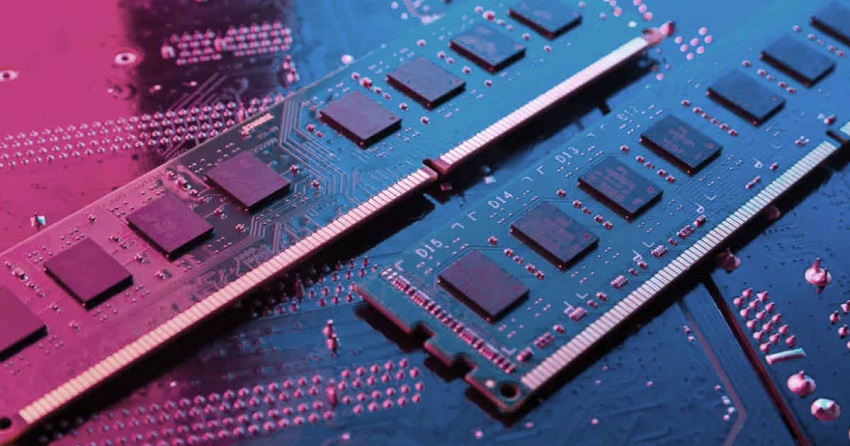
12 Jul How many MHz is DDR5 vs DDR4?
If you’re a tech enthusiast or someone looking to upgrade their computer’s memory, you might have come across the terms DDR5 and DDR4. These are the latest generations of dynamic random-access memory (DRAM) technology, which play a crucial role in determining the performance and speed of your computer. In this article, we will explore the MHz (megahertz) specifications of DDR5 and DDR4 and discuss how they compare to each other.
Understanding DDR4: The Previous Generation
Before diving into DDR5, it’s essential to understand the basics of DDR4. DDR4, short for Double Data Rate 4, is the fourth generation of DDR memory technology. It succeeded DDR3 and brought significant improvements in terms of performance and energy efficiency.
DDR4 memory modules have varying MHz ratings, ranging from 2133 MHz to 3200 MHz and beyond. These MHz ratings represent the memory module’s speed or how quickly it can transfer data. The higher the MHz rating, the faster the memory can operate and the quicker it can retrieve and store data. Explore the fclk frequency.
The Arrival of DDR5: Pushing the Boundaries
With the advancements in technology and the need for even faster memory speeds, DDR5 was introduced as the next step in the evolution of memory modules. DDR5, or Double Data Rate 5, promises to deliver improved performance, higher data transfer rates, and increased capacity compared to its predecessor.
DDR5 memory modules are expected to have MHz ratings starting from 3200 MHz and can go up to an astonishing 6400 MHz or higher. This significant increase in MHz rating translates into faster data access and improved overall system performance. However, it’s important to note that the availability of DDR5 modules may vary, as it takes time for technology to become widely adopted and commercially available.
DDR5 vs. DDR4: A Speed Comparison
When comparing DDR5 and DDR4 in terms of MHz ratings, DDR5 clearly takes the lead. The minimum MHz rating of DDR5 is expected to start where DDR4’s maximum rating ends. This means that even the entry-level DDR5 modules will provide higher speeds than the top-tier DDR4 modules. As DDR5 matures and becomes more accessible, we can expect to see even higher MHz ratings, pushing the boundaries of memory performance.
It’s worth noting that the MHz rating is not the only factor that determines the overall performance of a memory module. Other factors, such as latency timings, bandwidth, and capacity, also play a significant role. However, when it comes to raw speed, DDR5 certainly outshines its predecessor.
Real-World Applications and Benefits
The increased MHz rating of DDR5 brings several advantages and benefits to various computing applications. Here are a few notable examples:
- Gaming: Faster memory speeds contribute to smoother gameplay, reduced loading times, and improved overall gaming performance. Gamers can expect more responsive systems and an enhanced gaming experience with DDR5 modules.
- Content Creation: Professionals working with resource-intensive tasks like video editing, 3D rendering, and graphic design can benefit from the increased speeds offered by DDR5. It allows for faster data processing and multitasking, enabling quicker project completion and improved productivity.
- Data Centers and Servers: DDR5’s higher MHz ratings and increased capacity make it an ideal choice for data centers and servers. These environments require memory modules that can handle large workloads, process massive amounts of data, and support multiple users simultaneously.
- Future-Proofing: Upgrading to DDR5 ensures that your system is prepared for future technologies and advancements. As software and applications become more demanding, having faster memory speeds will help your system stay competitive and provide a smooth user experience.
In conclusion, DDR5 is the next generation of memory technology, offering higher MHz ratings and improved performance compared to DDR4. While DDR4 is still widely used and provides reliable performance, DDR5 is poised to become the new standard in memory modules, pushing the boundaries of speed and efficiency.
As DDR5 becomes more accessible, users can look forward to faster data transfer rates, enhanced gaming experiences, improved productivity, and future-proofing their systems. Keep an eye out for DDR5 memory modules from reputable brands and consult with experts or refer to official documentation to determine compatibility with your system.
FAQs
- Can DDR5 memory modules be used in DDR4 slots?
No, DDR5 memory modules have a different pin configuration and are not physically compatible with DDR4 slots. You will need a motherboard that supports DDR5 technology to use DDR5 memory modules.
- Will DDR5 memory significantly improve my computer’s performance?
DDR5 memory offers improved performance due to its higher MHz ratings. However, the overall impact on your computer’s performance will also depend on other factors such as the processor, graphics card, and storage.
- Are DDR5 memory modules backward compatible with DDR4 systems?
No, DDR5 memory modules are not backward compatible with DDR4 systems. They require a motherboard and chipset specifically designed to support DDR5 technology.
- When will DDR5 memory modules be widely available for purchase?
DDR5 memory modules are gradually becoming available in the market. However, their availability may vary depending on the region and the specific brand and model you are looking for. It’s best to check with reputable retailers or consult with computer hardware experts for the latest information.
- Is it worth upgrading from DDR4 to DDR5?
If you require faster memory speeds and want to future-proof your system, upgrading to DDR5 can be beneficial. However, it’s important to consider the compatibility with your existing hardware and evaluate the overall cost and performance benefits before making a decision.


No Comments